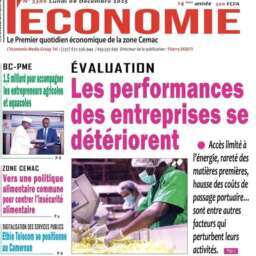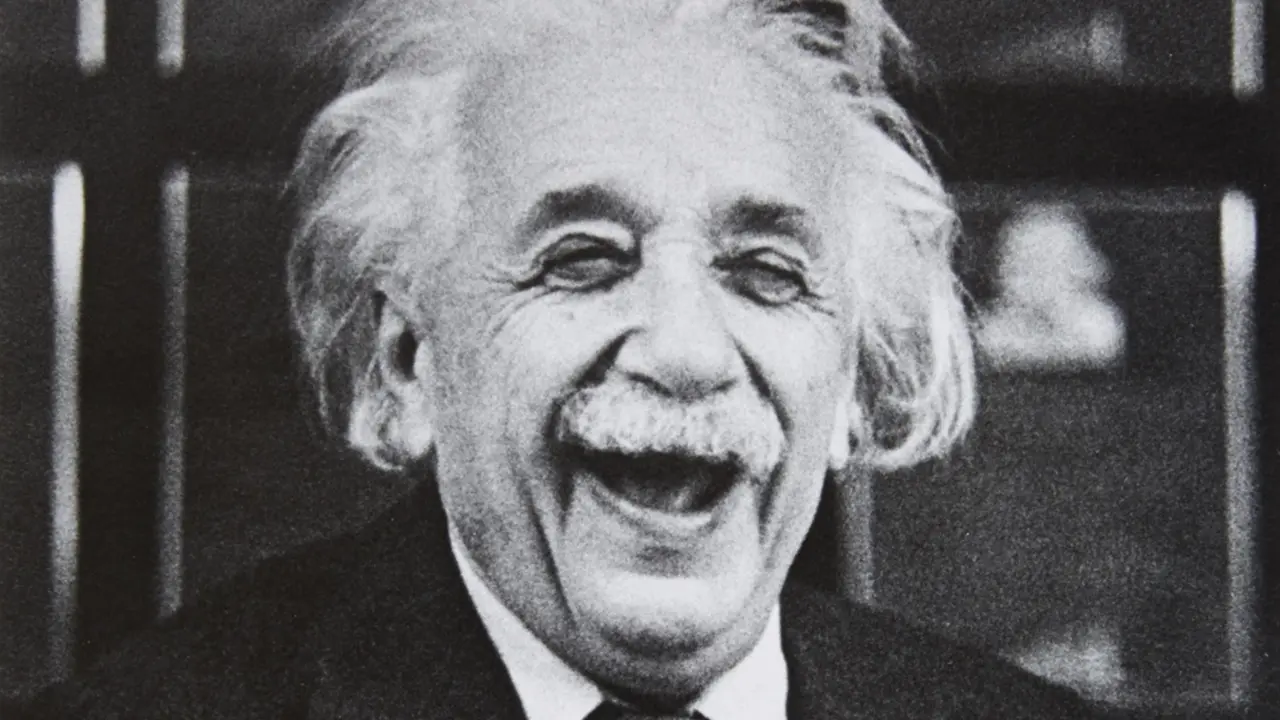The most celebrated genius in human history didn’t just revolutionize physics, but taught many valuable lessons about living a better life.
When it comes to living your best life, Albert Einstein — notorious as the greatest physicist and genius of his time, and possibly of all-time — probably isn’t the first name you think of in terms of life advice. You most likely know of Einstein as a pioneer in revolutionizing how we perceive the Universe, having given us advances such as:
- the constancy of the speed of light,
- the fact that distances and times are not absolute, but relative for each and every observer,
- his most famous equation, E = mc²,
- the photoelectric effect,
- the theory of gravity, general relativity, that overthrew Newtonian gravity,
- and Einstein-Rosen bridges, or as they’re better known, wormholes.
But Einstein was more than just a famous physicist: he was a pacifist, a political activist, an active anti-racist, and one of the most iconic and celebrated figures in all of history.
When it comes to living your best life, Albert Einstein — notorious as the greatest physicist and genius of his time, and possibly of all-time — probably isn’t the first name you think of in terms of life advice. You most likely know of Einstein as a pioneer in revolutionizing how we perceive the Universe, having given us advances such as:
- the constancy of the speed of light,
- the fact that distances and times are not absolute, but relative for each and every observer,
- his most famous equation, E = mc²,
- the photoelectric effect,
- the theory of gravity, general relativity, that overthrew Newtonian gravity,
- and Einstein-Rosen bridges, or as they’re better known, wormholes.
But Einstein was more than just a famous physicist: he was a pacifist, a political activist, an active anti-racist, and one of the most iconic and celebrated figures in all of history.
Rule #1: Expend your efforts on the things that matter.
When you think of Einstein’s appearance, the word “disheveled” may come to mind. His overgrown, uncombed hair, his ratty, worn-out, often smelly clothing, his shoes without socks, etc., all were notoriously slovenly. But none of that bothered Einstein, who in his later years wore what could be considered almost a uniform: a signature grey suit, sans the traditional sport coat, with a leather jacket in its place. (And, of course, with shoes and no socks.)
This idea, of wearing simple but functional clothing that puts the wearer at ease with themselves, has been made famous in recent years by tech entrepreneurs who have their own signature style:
- Steve Jobs and his infamous blue jeans and black turtlenecks (a style copied by Elizabeth Holmes),
- Jeff Bezos, who wears blue jeans with short-sleeve, monochrome, collared shirts,
- Mark Zuckerberg, who prefers blue jeans and T-shirts,
- Satya Nadella, who typically wears slacks, polo shirts, and Lanvin shoes,
- and Jack Dorsey, whose all-black outfits often include a hat, hoodie, or jacket,
is prized for one reason above all others: efficiency.
If you have a lot of decisions to make each day, or a lot of work that requires mental effort in any sense, cutting down on your overall mental load is of paramount importance if you want to avoid what’s known as decision fatigue: where our ability to make good decisions degrades as we become more tired from relentlessly having to make choices.
As fashion journalist Elyssa Goodman wrote, “Uniform dressing has roots in not just physical but mental efficiency. People who have to make immense decisions every day will sometimes choose a consistent ensemble because it allows them to avoid decision fatigue, where making too many unrelated decisions can actually cause one’s productivity to fall off.”
It’s a way to economize your efforts: to put them where they’re most needed, at the expense of not wasting them on spurious or unimportant matters. In other words, choosing not to put effort into the things that are superfluous to what’s actually important to you is a way to become more mentally efficient, which frees up your mind to focus on what actually matters most to you. Einstein’s lack of effort into his personal presentation extended to his disdain for going to the barber, as well as his often nearly-illegible penmanship. But the rewards, of focusing his mind on what was truly important to him, led him to a rich, fulfilling life.
Rule #2: Do things you love, even if you’re terrible at them.
While many of Einstein’s passions extended far beyond physics — including a love of baked goods and a penchant for playing the violin — perhaps the one he enjoyed the most was sailing. As Einstein wrote, “A cruise in the sea is an excellent opportunity for maximum calm and reflection on ideas from a different perspective.” His second wife (and cousin), Elsa, added that “There is no other place where my husband is so relaxed, sweet, serene, and detached from routine distractions; the ship carries him far away.” By focusing on something mundane, Einstein’s mind was free to wander, frequently leading him to exciting new ideas.
Einstein, however, was completely inept at sailing, and was at best a wildly inattentive sailor. He would frequently lose his direction, run his boat aground, or have his mast fall. Other sailing vessels frequently had to beware of Einstein’s ship, as he was a hazard to himself and others, refusing to wear a life vest despite being unable to swim. Boaters and even children routinely rescued him, and having his boat towed back to shore was a frequent occurrence. But the serenity Einstein experienced while sailing was unparalleled, giving him a mental freedom that we should all aspire to for ourselves.
When it comes to living your best life, Albert Einstein — notorious as the greatest physicist and genius of his time, and possibly of all-time — probably isn’t the first name you think of in terms of life advice. You most likely know of Einstein as a pioneer in revolutionizing how we perceive the Universe, having given us advances such as:
- the constancy of the speed of light,
- the fact that distances and times are not absolute, but relative for each and every observer,
- his most famous equation, E = mc²,
- the photoelectric effect,
- the theory of gravity, general relativity, that overthrew Newtonian gravity,
- and Einstein-Rosen bridges, or as they’re better known, wormholes.
But Einstein was more than just a famous physicist: he was a pacifist, a political activist, an active anti-racist, and one of the most iconic and celebrated figures in all of history.
He was also known for his unconventional behavior in a variety of ways that flouted social norms, including his unkempt hair, his witty humor, and his unrelenting hatred of socks. But less well-known is Einstein’s freely-given life advice to many of his friends, acquaintances, and contemporaries, which are perhaps even more relevant today, in the 21st century, than when he initially doled out his words of wisdom and compassion. Taken from the book The Einstein Effect, written by the official social media manager of the Einstein estate, Benyamin Cohen, these rules for a better life go far beyond physics and are relevant to us all. Here are, perhaps, the best and most universally applicable lessons from Einstein himself.
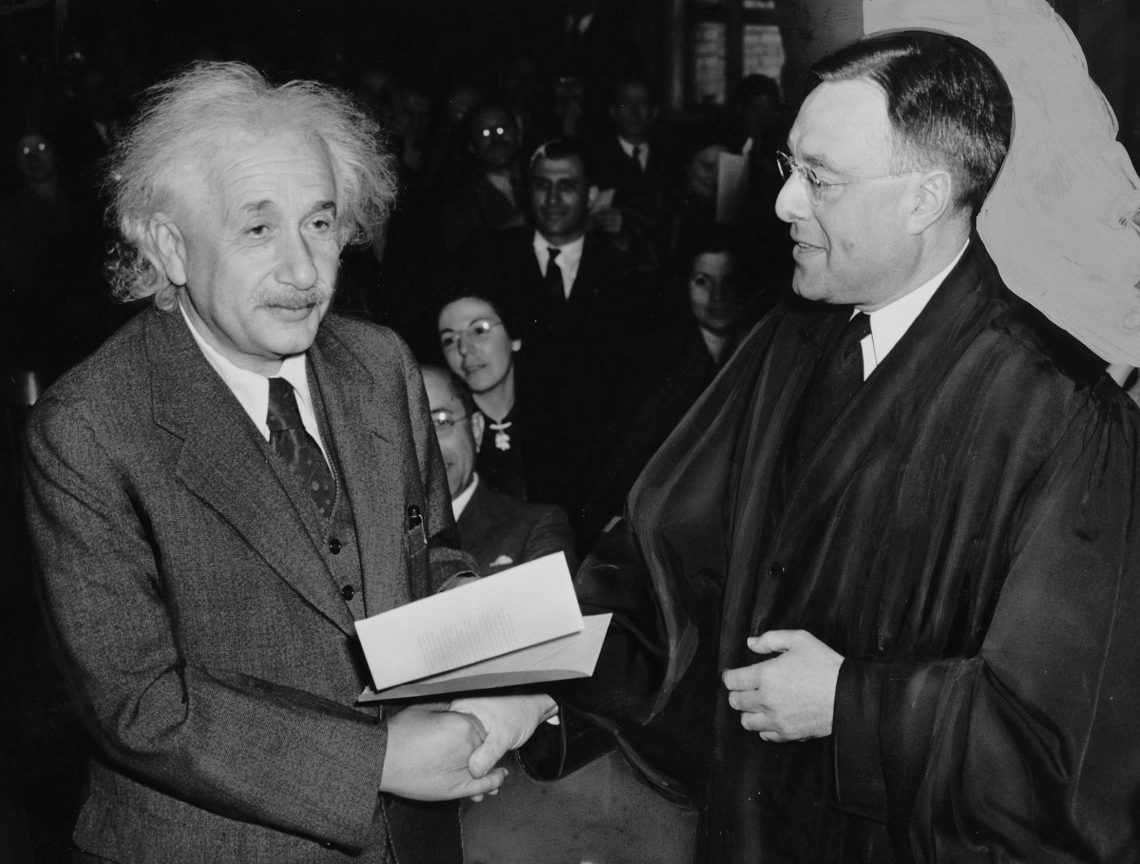
Rule #1: Expend your efforts on the things that matter.
When you think of Einstein’s appearance, the word “disheveled” may come to mind. His overgrown, uncombed hair, his ratty, worn-out, often smelly clothing, his shoes without socks, etc., all were notoriously slovenly. But none of that bothered Einstein, who in his later years wore what could be considered almost a uniform: a signature grey suit, sans the traditional sport coat, with a leather jacket in its place. (And, of course, with shoes and no socks.)
This idea, of wearing simple but functional clothing that puts the wearer at ease with themselves, has been made famous in recent years by tech entrepreneurs who have their own signature style:
- Steve Jobs and his infamous blue jeans and black turtlenecks (a style copied by Elizabeth Holmes),
- Jeff Bezos, who wears blue jeans with short-sleeve, monochrome, collared shirts,
- Mark Zuckerberg, who prefers blue jeans and T-shirts,
- Satya Nadella, who typically wears slacks, polo shirts, and Lanvin shoes,
- and Jack Dorsey, whose all-black outfits often include a hat, hoodie, or jacket,
is prized for one reason above all others: efficiency.

If you have a lot of decisions to make each day, or a lot of work that requires mental effort in any sense, cutting down on your overall mental load is of paramount importance if you want to avoid what’s known as decision fatigue: where our ability to make good decisions degrades as we become more tired from relentlessly having to make choices.
As fashion journalist Elyssa Goodman wrote, “Uniform dressing has roots in not just physical but mental efficiency. People who have to make immense decisions every day will sometimes choose a consistent ensemble because it allows them to avoid decision fatigue, where making too many unrelated decisions can actually cause one’s productivity to fall off.”
It’s a way to economize your efforts: to put them where they’re most needed, at the expense of not wasting them on spurious or unimportant matters. In other words, choosing not to put effort into the things that are superfluous to what’s actually important to you is a way to become more mentally efficient, which frees up your mind to focus on what actually matters most to you. Einstein’s lack of effort into his personal presentation extended to his disdain for going to the barber, as well as his often nearly-illegible penmanship. But the rewards, of focusing his mind on what was truly important to him, led him to a rich, fulfilling life.
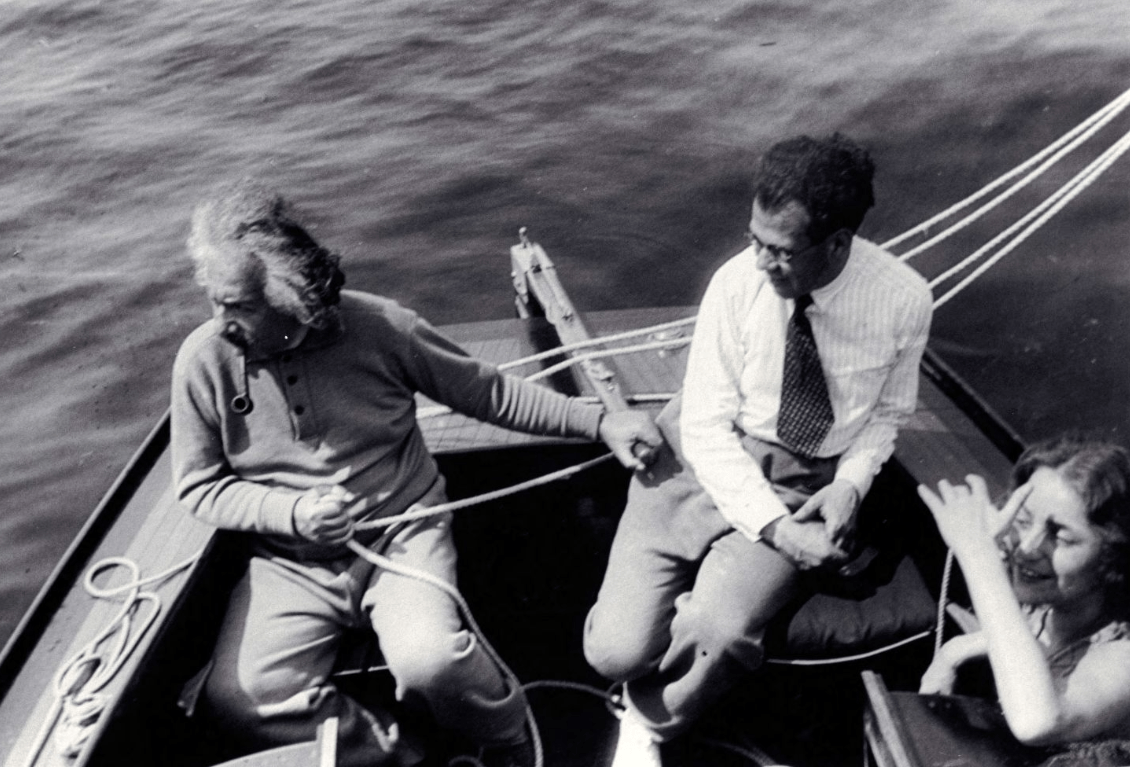
Rule #2: Do things you love, even if you’re terrible at them.
While many of Einstein’s passions extended far beyond physics — including a love of baked goods and a penchant for playing the violin — perhaps the one he enjoyed the most was sailing. As Einstein wrote, “A cruise in the sea is an excellent opportunity for maximum calm and reflection on ideas from a different perspective.” His second wife (and cousin), Elsa, added that “There is no other place where my husband is so relaxed, sweet, serene, and detached from routine distractions; the ship carries him far away.” By focusing on something mundane, Einstein’s mind was free to wander, frequently leading him to exciting new ideas.
Einstein, however, was completely inept at sailing, and was at best a wildly inattentive sailor. He would frequently lose his direction, run his boat aground, or have his mast fall. Other sailing vessels frequently had to beware of Einstein’s ship, as he was a hazard to himself and others, refusing to wear a life vest despite being unable to swim. Boaters and even children routinely rescued him, and having his boat towed back to shore was a frequent occurrence. But the serenity Einstein experienced while sailing was unparalleled, giving him a mental freedom that we should all aspire to for ourselves.
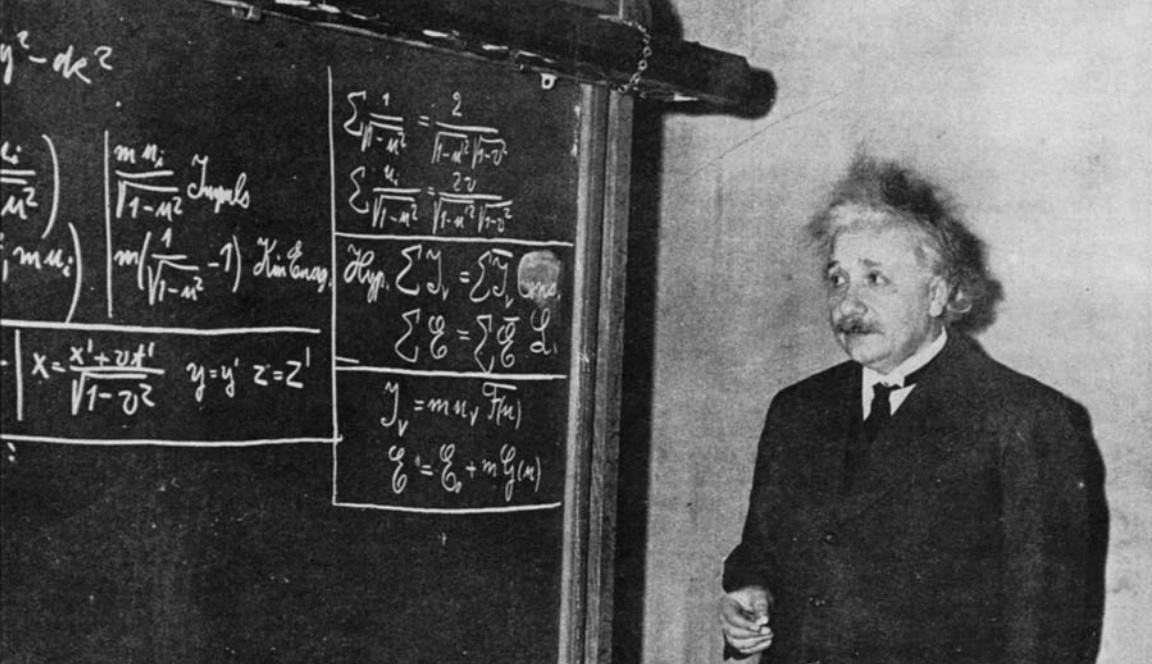
Rule #3: Have a puzzle mindset.
Think about the problems that we face, both as individuals and collectively, as a civilization. These could be financial, environmental, health-related, or political, for example, as those arenas affect us all. Do you view these problems as crises? If you do, you probably feel despair at them, as there’s very little that’s empowering about facing a crisis. But if you view them as a puzzle, you might be inclined to think about a fresh approach to solving them. In this regard, Einstein was pretty much the prototype individual for someone who viewed every difficulty he faced as a puzzle to be solved: in physics and beyond.
Consider his oft-misunderstood but most famous quote, “Imagination is more important than knowledge.” While many people had looked at the puzzle of objects moving near the speed of light before — including other geniuses like FitzGerald, Maxwell, Lorentz, and Poincaré — it was Einstein’s unique perspective that allowed him to approach that problem in a way that led him to the revolution of special relativity. With a flexible, non-rigid worldview, Einstein would easily challenge assumptions that others couldn’t move past, allowing him to conceive of ideas that others would unceremoniously reject out-of-hand.
Einstein was no stranger to having strongly held convictions about both life and physical reality, but each of his opinions, even those he was most certain of, were no more sacred to him than a mundane hypothesis. When one has a hypothesis, or idea, the goal isn’t simply to find out whether that hypothesis is right or wrong; in some sense, that’s the least interesting part of the endeavor. The search for the answers, including figuring out how to perform the critical test and interrogate the Universe itself in an effective manner, was what truly got Einstein excited.
His thought-experiments were among the most creative approaches ever taken by physicists, and that line of thought has been adopted by a great many scientists ever since who wish to avoid what’s known as cognitive entrenchment. What would a light-wave look like if you could follow it by traveling at the same speed it traveled at? How would the light from a distant star be deflected by the Sun’s gravity during a total solar eclipse? What experiments could one perform to determine whether our quantum reality is pre-determined by variables we cannot observe directly? Unlike a preacher who claims to be infallible, a prosecutor who wants to convince you of their perspective, or a politician who just wants to win your approval, having a puzzle mindset — i.e., the mind of a scientist — is the only one that can lead you to novel discoveries, including quite unexpected ones.
Rule #4: Think deeply, both long and hard, about things that truly fascinate you.
Over the course of his long life, Einstein received many letters: from those who knew him well to perfect strangers. When one such letter arrived on Einstein’s desk in 1946, asking the genius what they should do with their life, the response was as astute as it was compassionate. “The main thing is this. If you have come across a question that interests you deeply, stick to it for years and do never try to content yourself with the solution of superficial problems promising relatively easy success.”
And if you fail to arrive at the solution you’ve been chasing, don’t despair. As Einstein wrote to his friend David Bohm, “You should not be depressed by the enormity of the problem. If God has created the world, his primary worry was certainly not to make its understanding easy for us.” Although Einstein was most famous for the problems he did solve, there were plenty whose solutions eluded him all his life: from finding a deterministic explanation for the observed quantum behavior to the attempt to unify all of physics (including gravity and the other forces) into one overarching framework.
Although many have tried-and-failed (and continue to try-and-fail) to solve these and other puzzles, the greatest joy and fulfillment is often to be found in the struggle itself.
Rule #5: Don’t let politics fill you with either rage or despair.
Einstein kept up with many friends and members of the public, but also with his extended family. In correspondence with his cousin Lina Einstein, he offered a lesson that many of us would do well to heed. “About politics to be sure, I still get dutifully angry, but I do not bat my wings anymore, I only ruffle my feathers.”
How many of us have seen a friend, acquaintance, or even total stranger make a statement that filled us with outrage, and flew off the handle, filled with righteous indignation, and launched into a tirade as a result? While that might fulfill some primitive need in us to speak our mind and challenge what we see as an unacceptable narrative, how often was such a response actually effective in achieving any of our goals?
Sometimes, it truly is important to intervene and go all-out: what Einstein refers to as “batting our wings.” But at other times, in a lesson that King Bumi from Avatar: The Last Airbender would heartily approve of, sometimes the best response is to sit back, observe, think, and wait for the opportune, strategic moment to take action down the road: “ruffling our feathers” for the time being. It’s often a wise course of action, although for Einstein’s ill-fated cousin, Lina, it’s worth mentioning that she died in the Nazi gas chambers in 1942. (Update: That was a different “cousin Lina” to Einstein. The Lina he gave the advice to, his cousin Carolina, left Europe in the 1930s and emigrated to Uruguay, where she lived out the rest of her days.)
When it comes to living your best life, Albert Einstein — notorious as the greatest physicist and genius of his time, and possibly of all-time — probably isn’t the first name you think of in terms of life advice. You most likely know of Einstein as a pioneer in revolutionizing how we perceive the Universe, having given us advances such as:
- the constancy of the speed of light,
- the fact that distances and times are not absolute, but relative for each and every observer,
- his most famous equation, E = mc²,
- the photoelectric effect,
- the theory of gravity, general relativity, that overthrew Newtonian gravity,
- and Einstein-Rosen bridges, or as they’re better known, wormholes.
But Einstein was more than just a famous physicist: he was a pacifist, a political activist, an active anti-racist, and one of the most iconic and celebrated figures in all of history.
He was also known for his unconventional behavior in a variety of ways that flouted social norms, including his unkempt hair, his witty humor, and his unrelenting hatred of socks. But less well-known is Einstein’s freely-given life advice to many of his friends, acquaintances, and contemporaries, which are perhaps even more relevant today, in the 21st century, than when he initially doled out his words of wisdom and compassion. Taken from the book The Einstein Effect, written by the official social media manager of the Einstein estate, Benyamin Cohen, these rules for a better life go far beyond physics and are relevant to us all. Here are, perhaps, the best and most universally applicable lessons from Einstein himself.

Rule #1: Expend your efforts on the things that matter.
When you think of Einstein’s appearance, the word “disheveled” may come to mind. His overgrown, uncombed hair, his ratty, worn-out, often smelly clothing, his shoes without socks, etc., all were notoriously slovenly. But none of that bothered Einstein, who in his later years wore what could be considered almost a uniform: a signature grey suit, sans the traditional sport coat, with a leather jacket in its place. (And, of course, with shoes and no socks.)
This idea, of wearing simple but functional clothing that puts the wearer at ease with themselves, has been made famous in recent years by tech entrepreneurs who have their own signature style:
- Steve Jobs and his infamous blue jeans and black turtlenecks (a style copied by Elizabeth Holmes),
- Jeff Bezos, who wears blue jeans with short-sleeve, monochrome, collared shirts,
- Mark Zuckerberg, who prefers blue jeans and T-shirts,
- Satya Nadella, who typically wears slacks, polo shirts, and Lanvin shoes,
- and Jack Dorsey, whose all-black outfits often include a hat, hoodie, or jacket,
is prized for one reason above all others: efficiency.

If you have a lot of decisions to make each day, or a lot of work that requires mental effort in any sense, cutting down on your overall mental load is of paramount importance if you want to avoid what’s known as decision fatigue: where our ability to make good decisions degrades as we become more tired from relentlessly having to make choices.
As fashion journalist Elyssa Goodman wrote, “Uniform dressing has roots in not just physical but mental efficiency. People who have to make immense decisions every day will sometimes choose a consistent ensemble because it allows them to avoid decision fatigue, where making too many unrelated decisions can actually cause one’s productivity to fall off.”
It’s a way to economize your efforts: to put them where they’re most needed, at the expense of not wasting them on spurious or unimportant matters. In other words, choosing not to put effort into the things that are superfluous to what’s actually important to you is a way to become more mentally efficient, which frees up your mind to focus on what actually matters most to you. Einstein’s lack of effort into his personal presentation extended to his disdain for going to the barber, as well as his often nearly-illegible penmanship. But the rewards, of focusing his mind on what was truly important to him, led him to a rich, fulfilling life.

Rule #2: Do things you love, even if you’re terrible at them.
While many of Einstein’s passions extended far beyond physics — including a love of baked goods and a penchant for playing the violin — perhaps the one he enjoyed the most was sailing. As Einstein wrote, “A cruise in the sea is an excellent opportunity for maximum calm and reflection on ideas from a different perspective.” His second wife (and cousin), Elsa, added that “There is no other place where my husband is so relaxed, sweet, serene, and detached from routine distractions; the ship carries him far away.” By focusing on something mundane, Einstein’s mind was free to wander, frequently leading him to exciting new ideas.
Einstein, however, was completely inept at sailing, and was at best a wildly inattentive sailor. He would frequently lose his direction, run his boat aground, or have his mast fall. Other sailing vessels frequently had to beware of Einstein’s ship, as he was a hazard to himself and others, refusing to wear a life vest despite being unable to swim. Boaters and even children routinely rescued him, and having his boat towed back to shore was a frequent occurrence. But the serenity Einstein experienced while sailing was unparalleled, giving him a mental freedom that we should all aspire to for ourselves.

Rule #3: Have a puzzle mindset.
Think about the problems that we face, both as individuals and collectively, as a civilization. These could be financial, environmental, health-related, or political, for example, as those arenas affect us all. Do you view these problems as crises? If you do, you probably feel despair at them, as there’s very little that’s empowering about facing a crisis. But if you view them as a puzzle, you might be inclined to think about a fresh approach to solving them. In this regard, Einstein was pretty much the prototype individual for someone who viewed every difficulty he faced as a puzzle to be solved: in physics and beyond.
Consider his oft-misunderstood but most famous quote, “Imagination is more important than knowledge.” While many people had looked at the puzzle of objects moving near the speed of light before — including other geniuses like FitzGerald, Maxwell, Lorentz, and Poincaré — it was Einstein’s unique perspective that allowed him to approach that problem in a way that led him to the revolution of special relativity. With a flexible, non-rigid worldview, Einstein would easily challenge assumptions that others couldn’t move past, allowing him to conceive of ideas that others would unceremoniously reject out-of-hand.

Einstein was no stranger to having strongly held convictions about both life and physical reality, but each of his opinions, even those he was most certain of, were no more sacred to him than a mundane hypothesis. When one has a hypothesis, or idea, the goal isn’t simply to find out whether that hypothesis is right or wrong; in some sense, that’s the least interesting part of the endeavor. The search for the answers, including figuring out how to perform the critical test and interrogate the Universe itself in an effective manner, was what truly got Einstein excited.
His thought-experiments were among the most creative approaches ever taken by physicists, and that line of thought has been adopted by a great many scientists ever since who wish to avoid what’s known as cognitive entrenchment. What would a light-wave look like if you could follow it by traveling at the same speed it traveled at? How would the light from a distant star be deflected by the Sun’s gravity during a total solar eclipse? What experiments could one perform to determine whether our quantum reality is pre-determined by variables we cannot observe directly? Unlike a preacher who claims to be infallible, a prosecutor who wants to convince you of their perspective, or a politician who just wants to win your approval, having a puzzle mindset — i.e., the mind of a scientist — is the only one that can lead you to novel discoveries, including quite unexpected ones.
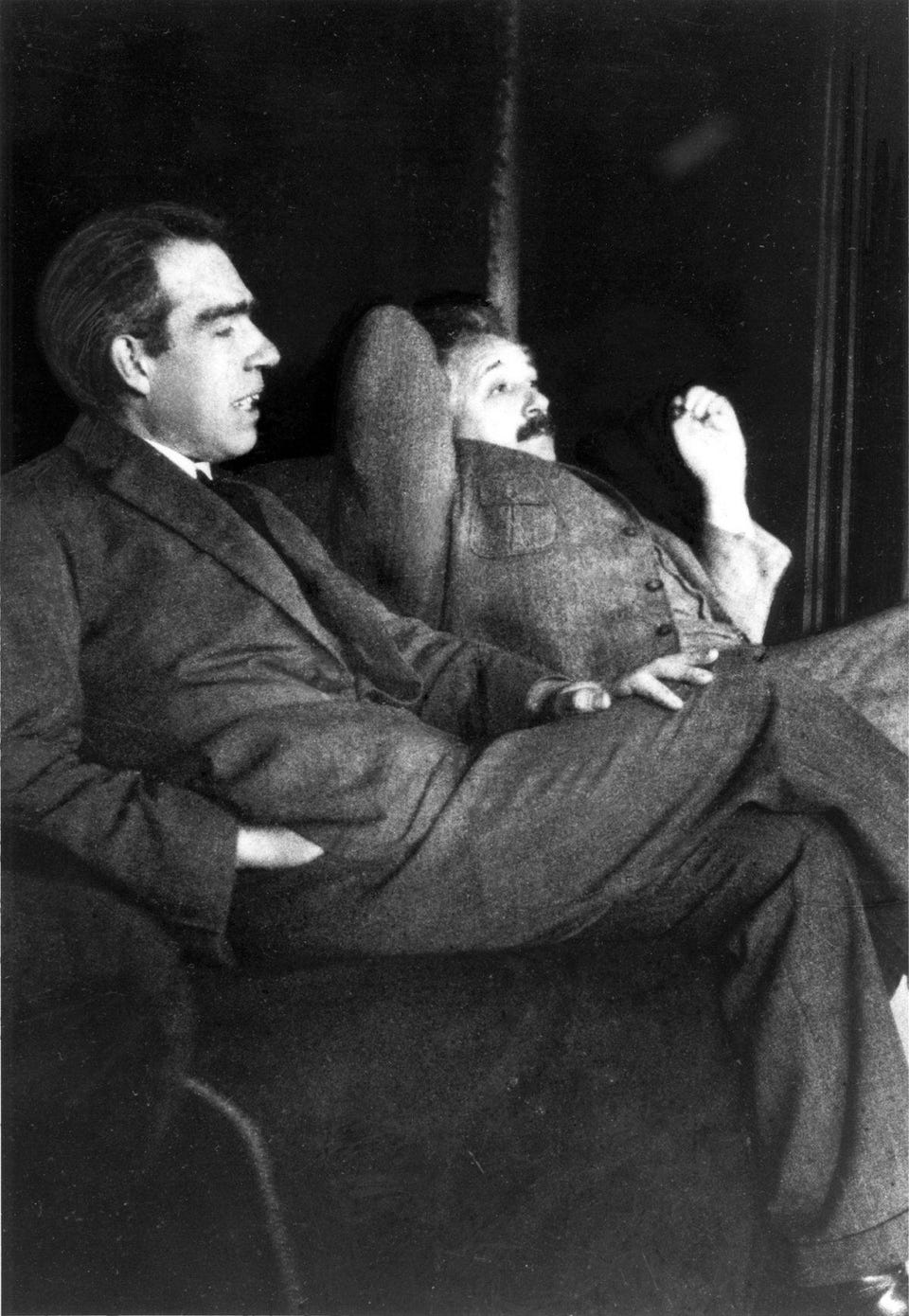
Rule #4: Think deeply, both long and hard, about things that truly fascinate you.
Over the course of his long life, Einstein received many letters: from those who knew him well to perfect strangers. When one such letter arrived on Einstein’s desk in 1946, asking the genius what they should do with their life, the response was as astute as it was compassionate. “The main thing is this. If you have come across a question that interests you deeply, stick to it for years and do never try to content yourself with the solution of superficial problems promising relatively easy success.”
And if you fail to arrive at the solution you’ve been chasing, don’t despair. As Einstein wrote to his friend David Bohm, “You should not be depressed by the enormity of the problem. If God has created the world, his primary worry was certainly not to make its understanding easy for us.” Although Einstein was most famous for the problems he did solve, there were plenty whose solutions eluded him all his life: from finding a deterministic explanation for the observed quantum behavior to the attempt to unify all of physics (including gravity and the other forces) into one overarching framework.
Although many have tried-and-failed (and continue to try-and-fail) to solve these and other puzzles, the greatest joy and fulfillment is often to be found in the struggle itself.
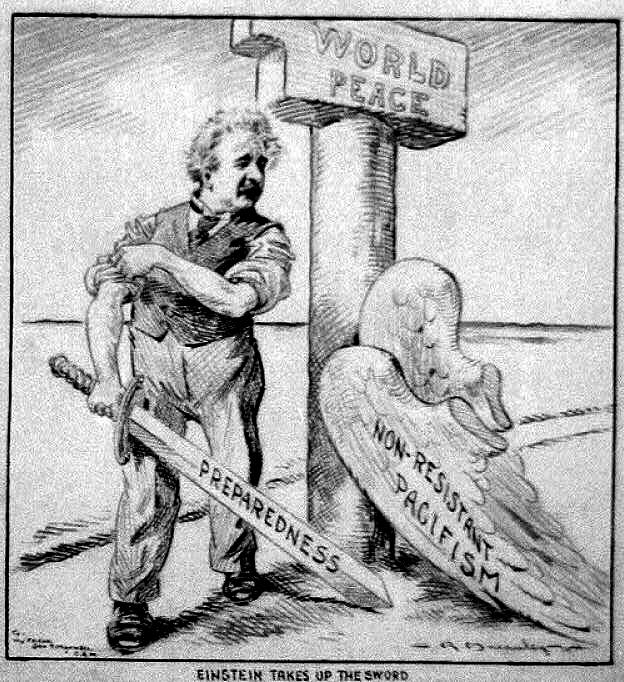
Rule #5: Don’t let politics fill you with either rage or despair.
Einstein kept up with many friends and members of the public, but also with his extended family. In correspondence with his cousin Lina Einstein, he offered a lesson that many of us would do well to heed. “About politics to be sure, I still get dutifully angry, but I do not bat my wings anymore, I only ruffle my feathers.”
How many of us have seen a friend, acquaintance, or even total stranger make a statement that filled us with outrage, and flew off the handle, filled with righteous indignation, and launched into a tirade as a result? While that might fulfill some primitive need in us to speak our mind and challenge what we see as an unacceptable narrative, how often was such a response actually effective in achieving any of our goals?
Sometimes, it truly is important to intervene and go all-out: what Einstein refers to as “batting our wings.” But at other times, in a lesson that King Bumi from Avatar: The Last Airbender would heartily approve of, sometimes the best response is to sit back, observe, think, and wait for the opportune, strategic moment to take action down the road: “ruffling our feathers” for the time being. It’s often a wise course of action, although for Einstein’s ill-fated cousin, Lina, it’s worth mentioning that she died in the Nazi gas chambers in 1942. (Update: That was a different “cousin Lina” to Einstein. The Lina he gave the advice to, his cousin Carolina, left Europe in the 1930s and emigrated to Uruguay, where she lived out the rest of her days.)
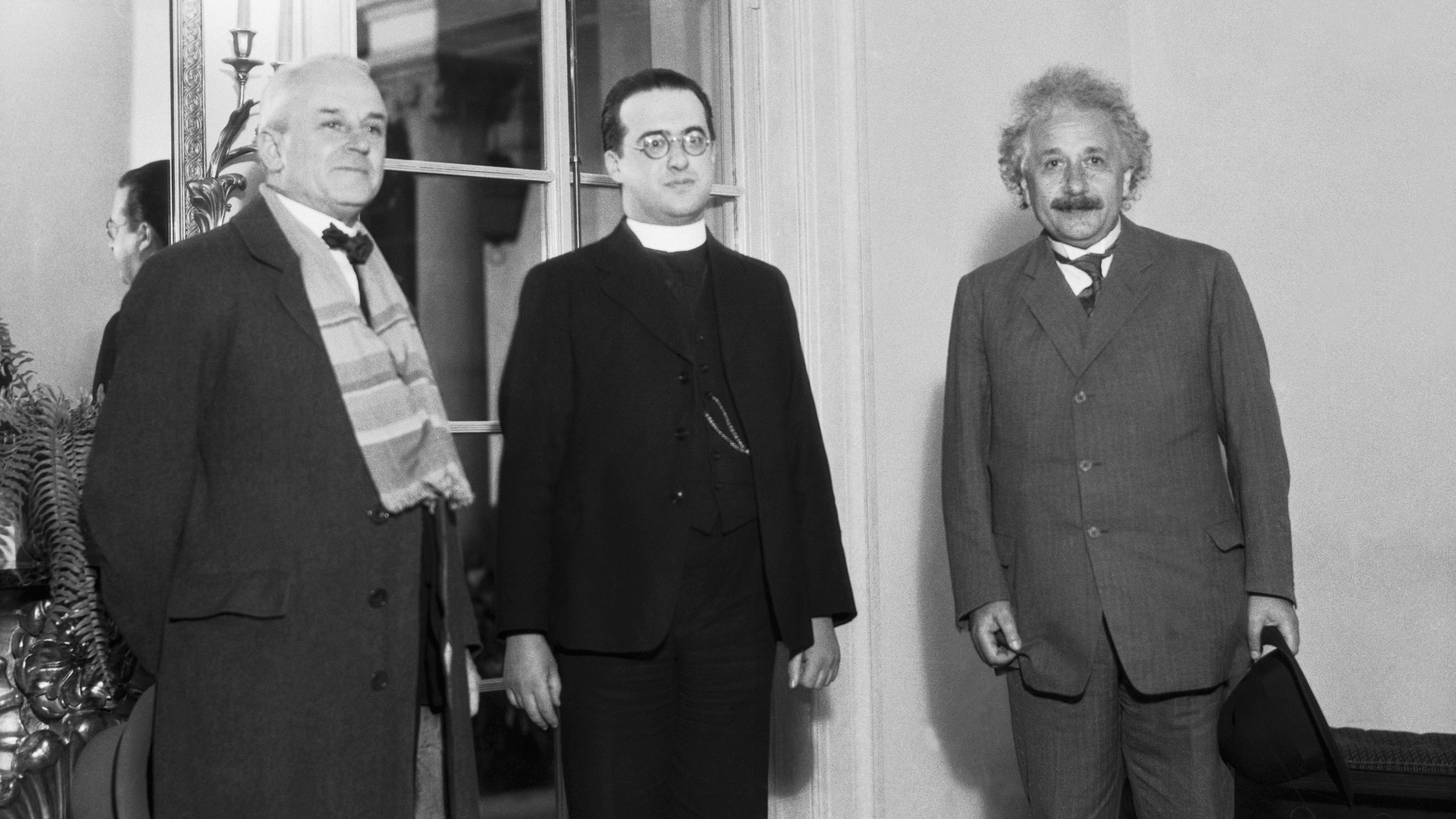
Rule #6: Blind obedience to authority is the greatest enemy of the truth.
Many of us, upon hearing something that we are certain is either absurd, flawed, or hopelessly corrupt, immediately and vociferously make up our minds to oppose them, regardless of what the full suite of evidence actually indicates. Once we abandon our critical thinking faculties because we are certain we know the answer, we tend to simply go along with those who agree with us and oppose those who espouse anything different. To Einstein, this represented the death of the rational mind, which he called “collective insanity” or a “herd mind.” Today, we would likely call it groupthink, and Einstein noted that it was often driven by a prominent figure spouting propaganda.
Scientists, including formerly reputable ones like Johannes Stark (Nobel Laureate and founder of the Stark effect), formed an anti-relativity society that discredited Einstein and his theory. Fueled by nationalism and anti-semitism, Einstein and his ideas became a target, with one line of attack claiming relativity was wrong and dangerous, and another line claiming it was brilliant but that Einstein stole the idea from “real” (non-Jewish) scientists. It was this course of action that eventually led to Einstein having a bounty placed on his head, leading to him fleeing Germany for the United States. While Einstein initially thought these machinations were silly, ridiculous, and harmless, he later concluded that “Blind obedience to authority is the greatest enemy of the truth.” In the era of fake news, this lesson is more important to assimilate than ever.
Rule #7: Science, truth, and education are for everyone, not just the privileged few.
Einstein was often very critical of the United States Government, even after emigrating in the 1930s and gaining his citizenship in 1940. The history of slavery and ongoing segregation and racism, in particular, resonated with him the same way that anti-Semitism did: as fundamentally dehumanizing as it was baseless. The FBI began a file on Einstein in 1932, and it had burgeoned to more than 1400 pages by the time Einstein died in 1955, and Einstein’s anti-racist actions were deemed fundamentally un-American by many (including Senator Joseph McCarthy), but Einstein would not be deterred.
In 1937, Einstein invited black opera star Marion Anderson to stay at his house when she was refused lodging at the local (segregated) hotel in Princeton. In 1946, Einstein took the revolutionary action of simply visiting Lincoln University — the first degree-granting black college in the United States — and lectured, speaking with students and answering questions. Delivering an address to the student body, Einstein said:
“My trip to this institution was on behalf of a worthwhile cause. There is a separation of colored people from white people in the United States. That separation is not a disease of colored people. It’s a disease of white people.”
In 1953, Einstein defended the academic freedom of William Frauenglass, a teacher who taught about easing interracial tensions, in a letter published by The New York Times. The following year, he further pushed for “the right to search for truth and to publish and teach what one holds to be true.” In this day and age, we can be certain that Einstein would have pushed for science, truth, and education to be available to everyone. While certain physical properties may be relative, like space and time, the joys, knowledge, and truths uncovered by science belong to no one race, nation, or faction, but rather to all of humanity.
Source: Big Think




























